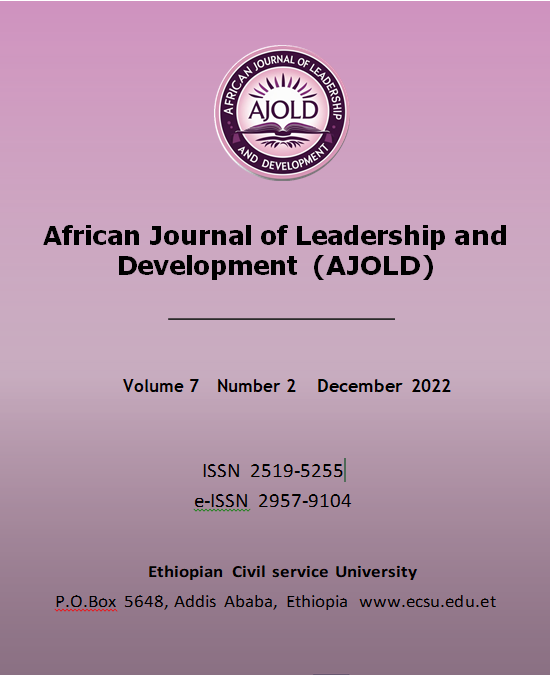Strategic Priorities Cascading and Contextualizing Practices at Different Tiers of Oromia Regional State: Context and Consistency Analysis
DOI:
https://doi.org/10.63990/2022ajoldvol7iss2pp33-46Keywords:
Context, Consistency Strategy, Strategic Priority, Cascading, Plan, TiersAbstract
Nowadays, organizations face a fast changing and threatening environment that comes from demand for new policies, national and global economic forces, demographic, socio-cultural, and technological changes. These giant forces inevitably require organizations to be serious in thinking about their orientation, decisions, and actions. The objective of the current study was to examine the practice of strategic priority cascading focusing on context and consistency analysis. Specifically, context sensitivity, consistency of cascading practice, participation of stakeholders, capacity of planners, and factors affecting the practice of strategic priority cascading in the different tiers. Descriptive research design and mixed research approach were used. The population of the study was the selected public sectors ranging from Oromia Regional State to the Wereda level including Kebele. Both probabilistic and purposive sampling techniques were used based on the nature of the data and relevancy of the information. Questionnaires, interviews, focus group discussion and document analysis were used to collect data. The finding of the study shows that there was moderate level of context sensitivity of the strategic priority cascading and poor level of consistency. In addition, the result of the study shows that the relevant stakeholders’ participation was inadequate demanding improvement such as stablishing strong framework that maintains active participation. Furthermore, capacity building practice pertaining to the strategic priority cascading was low demanding any concerning body. The finding also indicates that a range of factors and challenges could affect the strategic priority cascading in the different tiers of the government. It was concluded that the strategic priority cascading practice in the different tiers was not adequately context sensitive and less consistent with the specific and unique characteristics of the study area. Recommendations were given based on the critical issues perceived in the result.
Downloads
Published
How to Cite
Issue
Section
License
This work is licensed under a Creative Commons Attribution-NonCommercial 4.0 International License






